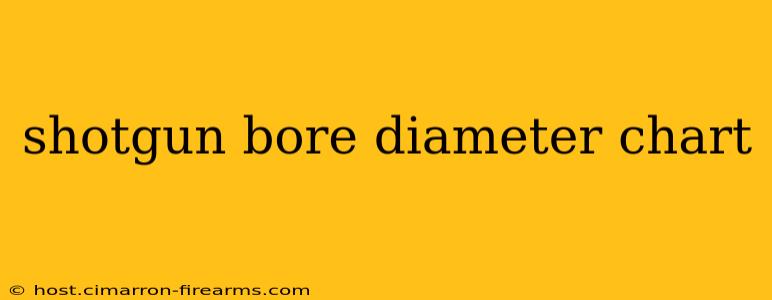Choosing the right shotgun depends heavily on understanding its bore diameter. While the term "gauge" is commonly used, it actually refers to the number of lead balls, each with a diameter equal to the bore, that weigh one pound. This seemingly archaic system can be confusing, so let's break down shotgun bore diameters and their corresponding gauges, along with the crucial role of chokes.
Understanding Shotgun Gauges
The lower the gauge number, the larger the bore diameter. This means a 10-gauge shotgun has a larger bore than a 12-gauge, and so on. Here's a helpful chart summarizing common shotgun gauges and their approximate bore diameters:
| Gauge | Approximate Bore Diameter (Inches) | Notes |
|---|---|---|
| 10 Gauge | 0.775 | Large bore, typically used for waterfowl hunting. |
| 12 Gauge | 0.729 | The most popular gauge for hunting and sport shooting. |
| 16 Gauge | 0.662 | A lighter recoil option, popular for upland game hunting. |
| 20 Gauge | 0.615 | Even lighter recoil, suitable for smaller game and youth shooters. |
| 28 Gauge | 0.550 | Lightest recoil, ideal for small game and introduction to shotgun shooting. |
| .410 Bore | 0.410 | Smallest common bore diameter, often used for small game hunting. Note that ".410" isn't technically a gauge. |
Important Note: These are approximate bore diameters. Slight variations can exist between manufacturers and even individual shotguns within the same model.
The Role of Chokes
The choke is a constriction at the muzzle of the shotgun barrel that affects the shot pattern. Different chokes produce varying degrees of shot constriction, influencing shot pattern density and range. This is crucial for different hunting situations and target types.
Common Choke Types and Their Effects:
-
Cylinder: Produces the widest shot pattern with the shortest range. Ideal for very close-range shooting, like trap shooting or hunting in thick cover.
-
Improved Cylinder (IC): Slightly constricted compared to cylinder, providing a wider pattern than modified or full chokes but with slightly better range.
-
Modified (Mod): A moderate constriction, offering a balance between range and pattern density. A versatile choice for various hunting situations.
-
Improved Modified (IM): Falls between Modified and Full choke, providing a tighter pattern than Modified but a looser pattern than Full choke.
-
Full: Produces the tightest shot pattern with the longest range. Best for long-range shots at flying birds or targets.
-
Extra Full: Even tighter than Full choke, but sacrifices some pattern density for even longer range. Not as commonly used as other chokes.
Choosing the right choke depends on the type of game being hunted, the distance to the target, and the shooter's skill.
Beyond the Basics: Other Factors Influencing Shot Pattern
While gauge and choke are primary factors, several other elements influence shot pattern:
-
Shot size: Smaller shot sizes (like No. 8 or No. 9) create wider patterns, while larger shot sizes (like No. 4 or No. 00) produce tighter patterns.
-
Ammunition: The type and quality of ammunition used will significantly impact shot patterns and performance.
-
Barrel length: Longer barrels often provide a tighter shot pattern due to the longer time the shot wad has to stabilize.
-
Shotgun model and manufacturer: Individual shotgun designs and manufacturing tolerances may introduce minor variations in pattern performance.
Conclusion: Making Informed Choices
Understanding shotgun bore diameters and their corresponding gauges is fundamental for any shotgun enthusiast or hunter. This knowledge, combined with an understanding of choke types and other influencing factors, allows for informed choices in ammunition selection and achieving optimal shooting performance. Remember to consult your shotgun's manual and potentially engage with an experienced shooter or gunsmith to refine your technique and ensure safe handling.

